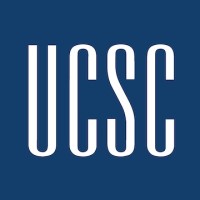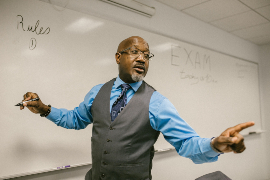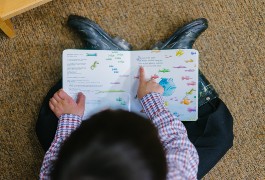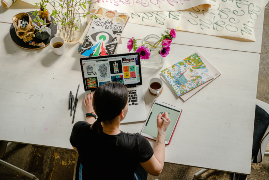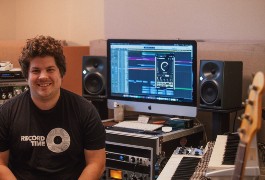Bachelor of Arts in Creative Technologies (Bachelors)
UC Santa Cruz
Santa Cruz, CA
Creative technologies (CT) is an online- and hybrid-modality interdisciplinary arts and design major, led by faculty in Art, Music, and PPD (Performance, Play, and Design). Its curriculum features innovative teaching and learning environments, paired with an emphasis on emerging arts and design technologies and the active roles of artists and designers in cultivating a just and ethical society. Our courses intersect faculty commitments to justice, accessibility, equity, diversity, and inclusion—along cultural, gender, racial, economic, and social dimensions—with commitments to expanding access to innovative arts education, re-contextualizing and challenging Western and other hegemonic frameworks for art and design, and amplifying marginalized and historically silenced voices.
Students in creative technologies develop fluency in the languages and tools of contemporary media, arts, and design technologies, including technologies for creativity in sound, image, and animation; games and playable media; documentary and knowledge-curation media; web-based and participatory media; and creative interactions with machine learning and AI. At the core of the Creative Technologies ethos is a conviction that technology literacy is inseparable from technology ethics. Artists and designers are primary curators of knowledge, dialogue, and cultural representation; with those roles we hold a responsibility to cultivate community agency, democracy, environmental justice including climate action, and broad access to knowledge and social dialogue. To support that crucial work, the Creative Technologies program aims to prepare students for a lifetime of relevant, meaningful, and impactful creative engagement—while instilling capacity for work and play, activism and education, self-expression, self-efficacy, and even fun.
This program is primarily delivered in lab-based online environments — where the online presence that students create and perform with each other is just as important as the lessons they learn together as they make art, engage in critical inquiry, and critique. We aim to inspire collaborative art and design that connect online and traditional communities with creative vitality, critical inquiry, improvisation, and lasting meaning. You will learn how to navigate the platforms and venues in which sound and image, story and play, character and action, can be brought effectively to a wide and inquisitive public. And you will learn effective production practices—including improvisation, dialogue, research skills, and styles of collaboration—that bring complex, impactful projects to fruition.
Mga Resulta ng Pagkatuto ng Programa
✔ Gain literacy in creative tools for digital expression, and in the effective use of technology in arts and design: including digital platforms and algorithms, AI- and algorithmic arts and design tools, and emerging technology in a variety of media.
✔ Critically comprehend media and media culture, potentially including institutions, creative labor and labor practices; the ethics of data, information, and digital platforms; with a focus on digital media's diverse impacts on dialogues surrounding tradition, culture, and racial, social, and environmental justice.
✔ Understand contemporary creative practices in their contexts: relating them to the impactful practices of our contemporaries and predecessors; contextualized by theory, history, and ethics in the arts, design, and media.
✔ Learn strategies for bringing complex work to completion, individually and collaboratively, across a variety of media, including written, image- and sound-based, performance-based, and socially engaged media.
✔ Cultivate a mindset of curiosity, dialogue, and growth, with respect to one’s work and process, and its social and ethical impact. We learn from mistakes as well as triumphs—ours and others'—as we work toward meaningful creative work and social change.
✔ Learn to engage in informed social practices, shaped by reflection on practical activism for positive change; individual and collective identity; sustainability; equity; and justice; and by a community-focused commitment to re-contextualize and challenge Western and other hegemonic frameworks for art and design.



